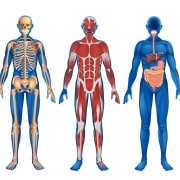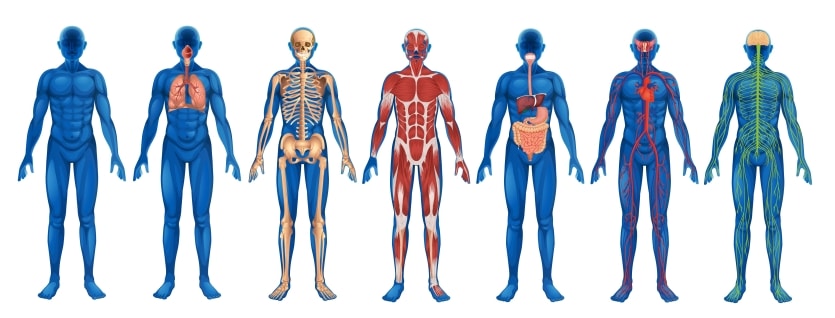From exercise to rest to diet, training for a fitness challenge can feel like a part-time job. Athletes dedicate time, money, and energy into their preparation. One training technique athletes often use involves reducing exercise intensity and increase carbohydrate intake—a process known as carb loading.
Carb loading is a strategy that helps athletes improve their performance and feel strong when exercising for longer than 90 minutes. During training, an athlete will typically consume a balanced diet with a mix of carbs, proteins, and fats to support daily energy needs and recovery. While carb loading, athletes focus significantly on increasing carbohydrate intake to maximize glycogen stores and ensure sustained energy during prolonged activities.
Glycogen: The Essential Energy Reserve
Glycogen is the primary energy source during high-intensity endurance exercise. It is a form of glucose stored mainly in the liver and muscles.
The goal of carb loading is to max out your glycogen storage by consuming more carbohydrates than the body can use right away. During exercise, glycogen is broken down into glucose, which is then used by muscles for energy. Hence, the more glycogen stored in the body, the more energy it can use to fuel a prolonged workout. When glycogen stores are depleted athletes experience fatigue and a drop in performance—known to many athletes as “hitting the wall.”
By increasing carb intake and reducing energy intensity, athletes can boost their glycogen reserves and have a readily available energy source during prolonged physical activity. Adequate glycogen stores help sustain performance and delay the onset of fatigue.
Benefits of Carb Loading
By maximizing glycogen stores, athletes have the energy for events lasting longer than 90 minutes, such as marathons and long-distance cycling or swimming. With more glycogen available, athletes can maintain a higher intensity for longer periods.
In addition to aiding with physical needs, carb loading provides a mental boost. Endurance athletes understand the immense toll exercise takes on their mental faculties. Knowing that an athlete has prepared in all aspects, including maximizing their energy reserves, can give athletes a psychological edge. With sustained energy levels, athletes can maintain better focus and concentration throughout the event.
Carb loading also aids in better recovery. After intense exercise, athletes often experience a mix of physical and emotional sensations that can significantly impact their recovery. Having ample glycogen stores helps the body repair muscles faster, reduces soreness, and minimizes damage, which is crucial for quick recovery before the next training session or competition. However, athletes should still make sure to get ample rest and fuel before performing another intense workout. Overall, carb loading can be a game-changer for endurance athletes, helping them perform at their best and recover more effectively.
Carb Loading Best Practices
An athlete’s diet in the days leading up to intense exercise will help or hurt performance. There is more to carb loading than eating a plate of pasta the night before the big race. Athletes can follow some of these best practices to maximize the benefits of carb loading.
- Timing: Begin carb loading 3-4 days before the event. Gradually increase carbohydrate intake and decrease exercise over that time.
- Select the right foods: Some foods will provide more fuel than others. For example, foods high in fiber like beans, whole grains, and certain vegetables can cause digestive issues such as bloating and gas—not ideal during exercise. Similarly, foods and drinks high in sugar can cause spikes and crashes in blood sugar levels, leading to inconsistent energy levels. The best food options are low in fiber—like white rice, pasta, potatoes, and white bread, and complex carbohydrates such as oatmeal, quinoa, and sweet potatoes for sustained energy.
- Balanced diet: Carb loading doesn’t mean neglecting fats and proteins. A lack of balanced nutrition can affect overall health and recovery. Ensure each meal includes a mix of macronutrients to support overall nutrition.
- Monitor Portions: Carb loading does not give athletes free reign to consume as much food as they can for a week. Eating too much before exercising can lead to weight gain and discomfort. Eat enough to increase glycogen stores without consuming excessive calories. Consider smaller, more frequent meals to avoid feeling overly full.
- Stay Hydrated: Increasing carbs also means increasing the amount of water an athlete must drink. Glycogen storage in the muscles and liver requires water. For every gram of glycogen stored, approximately three grams of water are also stored. Adequate hydration ensures that the body can effectively store the increased glycogen from carb loading.
- Practice: Test the carb loading strategy during training to see how the body responds. Make adjustments based on how feeling and performance during these trial runs.
- Deplete Glycogen Pre-carb Load: Depleting glycogen stores before carb loading can enhance the muscles’ ability to store more glycogen when carb loading. This process involves reducing carbohydrate consumption while increasing high-intensity exercise to break down glycogen stores in the muscles. When carbs are reintroduced during carb loading, it can lead to higher energy reserves. However, while this strategy can help some endurance athletes, it can also make athletes feel fatigued while training.
To perform their best, athletes must ensure they are consuming nutritious carbs that will give them the energy to complete their intense exercise.
Carb Loading Sample Menu
During normal training, athletes consume a balanced diet of carbs, fats, and proteins. Carbs are not included in excessive amounts. Instead, the focus is on maintaining energy levels for regular training sessions.
When carb loading, athletes primarily focus on significantly increasing carbohydrate intake to maximize glycogen stores. In the week leading up to a fitness challenge, an athlete’s diet may look something like the following sample menu:
Day 1-3 (3-4 days before the event)
- Breakfast: Oatmeal with honey and banana, whole-grain toast with jam, and a glass of orange juice
- Snack: Low-fat yogurt with granola and berries
- Lunch: Grilled chicken sandwich on whole-grain bread, a side of pasta salad, and a piece of fruit
- Snack: Smoothie made with milk, banana, and a scoop of protein powder
- Dinner: Spaghetti with marinara sauce, steamed vegetables, and garlic bread
- Snack: Pretzels or rice cakes with a light spread of peanut butter
Day 4 (1 day before the event)
- Breakfast: Pancakes with syrup, scrambled eggs, and a glass of apple juice
- Snack: Fresh fruit (e.g., apple or orange) and a handful of nuts
- Lunch: Turkey wrap with whole-grain tortilla, a side of quinoa salad, and a fruit smoothie
- Snack: Crackers with cheese or hummus
- Dinner: Baked potato with lean meat (e.g., chicken or fish), steamed broccoli, and a roll
- Snack: Low-fat pudding or a small bowl of cereal
When possible, opt for low-fiber carbs to avoid digestive issues, and include a mix of fats and proteins to support overall nutrition. Note that athletes must drink plenty of water throughout the day to stay hydrated.
Successful Athletics through Carb Loading
Carb loading can significantly enhance an athlete’s performance in endurance events by maximizing glycogen stores. By increasing carbohydrate intake, athletes can ensure sustained energy levels, reduce fatigue, and improve recovery times. Whether gearing up for a marathon or a long-distance cycling event, implementing effective carb loading practices can be a game-changer for athletic success.
References
https://www.healthline.com/nutrition/carb-loading
https://www.sportsmd.com/sports-nutrition/carbohydrates/carbo-loading-tips-endurance-athletes/
https://www.verywellfit.com/what-is-carb-loading-5196368
https://runtothefinish.com/7-carbo-loading-mistakes/
https://sportsmedicine-open.springeropen.com/articles/10.1186/s40798-024-00724-6
https://therunningchannel.com/simple-guide-to-carb-loading/
https://www.nsca.com/education/articles/kinetic-select/carbohydrate-loading/
























